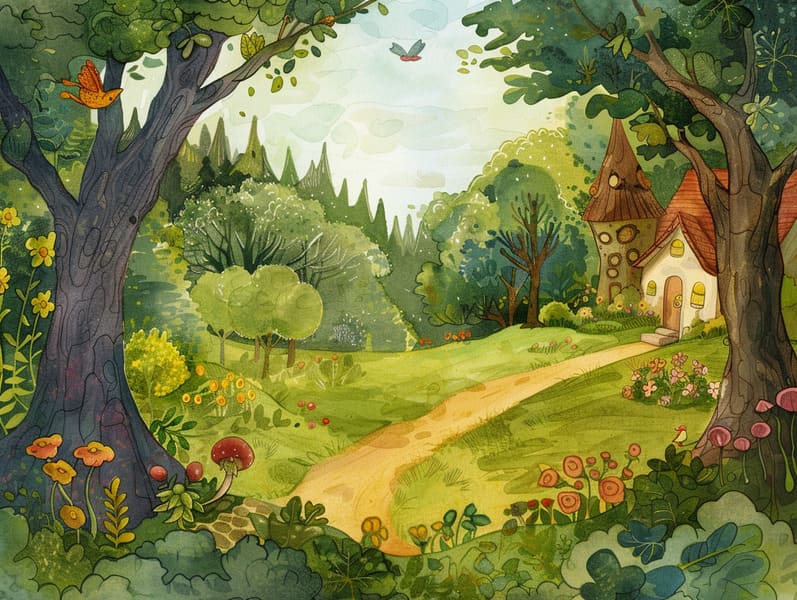Tracing the Heritage of Popular Fairy Tales with Its Continued Delight.
Tracing the Heritage of Popular Fairy Tales with Its Continued Delight.
Blog Article

Ancient fairy tales have old origins. These stories have been shared from one generation to the next well before they were ever written down. They developed from a variety of cultures, including American traditions. They were initially told among older generations, often carrying themes and messages relevant to the societal norms and beliefs of the time.
Jacob and Wilhelm Grimm, Jacob and Wilhelm (the Grimm brothers), were among the first to collect and release many of these beloved narratives. Their published works, "Grimm's Story Collection," included classics like "Ashenputtel," "Hansel and Grethel," and "Snow White," which have since become essentials in the world of traditional fairy tales. Similarly, the Danish author's charming tales, such as "The Little Mermaid," and "The Duckling that Could," have gained the love worldwide, guaranteeing their place in the pantheon of iconic fairy tales.
Despite their ancient origins, traditional fairy tales remain as impactful as ever, especially as kids' bedtime tales. These delightful tales are now available in diverse formats, including colorful picture books, fantastical animations, and free fairy tales online.
Their continued relevance can be linked to several delightful features:
Vital Lessons: Classic fairy tales often provide important moral lessons. Tales like "The Boy Who Cried Wolf" teach the merit of truth, while "The Tale of the Tortoise and the Hare" highlight the values of persistence and modesty. These tales offer the young clear distinctions between truth and falsehood, building their moral compass in a soft yet significant way.
Empathy and Understanding: Old fairy tales frequently depict characters facing struggles and tests, fostering kids to feel with their struggles and champion their triumphs. For instance, "The Story of Beauty and the Beast" teaches us the merit of valuing inner qualities to recognize the real person of a character, building tenderness and perception.
Cultural Awareness: Many old fairy tales are infused with the cultural contexts from which they were born. Learning from these fairy tales can provide intriguing perspectives into different heritages, nurturing a sense of world awareness and perception.
Inventiveness and Fantasy: The mythical elements in fairy tales—magical spells—activate children’s imaginative ideas. These tales transport readers to enchanted realms, provoking fantasy ideas and a sense of amazement that continues a lifetime.
Old fairy tales are not only captivating but also informative. They provide whimsical tools in strengthening various mental and emotional abilities in children. When fairy tales are voiced, they cultivate verbal skills by teaching new language items and elaborate sentence structures. This practice also fosters listening skills and attention span, as young ones follow the story, excited to see what happens next.
Furthermore, reflecting on the themes and characters of timeless fairy tales can advance thought processes famous fairy tales for children and reasoning skills. The young are instructed to notice patterns, anticipate outcomes, and understand cause and effect. These talks also aid children articulate their thoughts and feelings, advancing their emotional intelligence.
In today’s modern era, the existence of online fairy tales has made these fairy tales more within reach than ever. Web platforms and software present broad selections of children's fairy tales that can be explored or listened through anytime, anywhere. Fairy tales voiced are particularly well-liked, extending an engaging way for the young to experience these magical stories. Narrated books and read-to-me stories bring characters and settings to life, often enhanced by charming soundtracks and music that intensify the tale journey.
The persistent attraction of ancient fairy tales lies in their ability to shift to modern times while staying true to their central values. Contemporary modernizations of these narratives often incorporate more representative characters and modern settings, making them relevant to today’s audience. However, the core values of fortitude, sympathy, and justness remain unchanged, continuing to resonate with audiences of all ages.
Traditional fairy tales also offer a sense of calm and closeness. They make available a systematic narrative with a obvious beginning, middle, and end, often wrapping up with the wrap-up of conflicts and the triumph of goodness over badness. This regularity can be easing for kids, extending a sense of dependability in an inconstant world.
Traditional fairy tales continue to charm and guide new generations, maintaining their beauty and relevance in modern society. As kids' bedtime tales, they grant access to a perfect blend of allure and teaching, cultivating moral values, empathy, and creativity. The availability of online fairy tales and the in demand status of fairy tales voiced assure that these classic stories remain available to new generations.
By perpetuating and disseminating these tales, we continue to admire the rich tapestry of storytelling and cultural heritage. Whether you are delving into a colorful picture book, discovering a web-based collection, or listening through an spoken story, the majesty of famous fairy tales is always within reach. These tales reveal of the timeless spell of storytelling and its ability to gather us across epochs and places.
Whether you are perusing a beautifully illustrated book, enjoying a electronic library, or listening through an read-aloud story, the mystique of classic fairy tales is always within reach.
These stories illustrate of the eternal effect of fairy tales and its ability to bring us together across centuries and lands, forming a connection that enchants and educates alike.